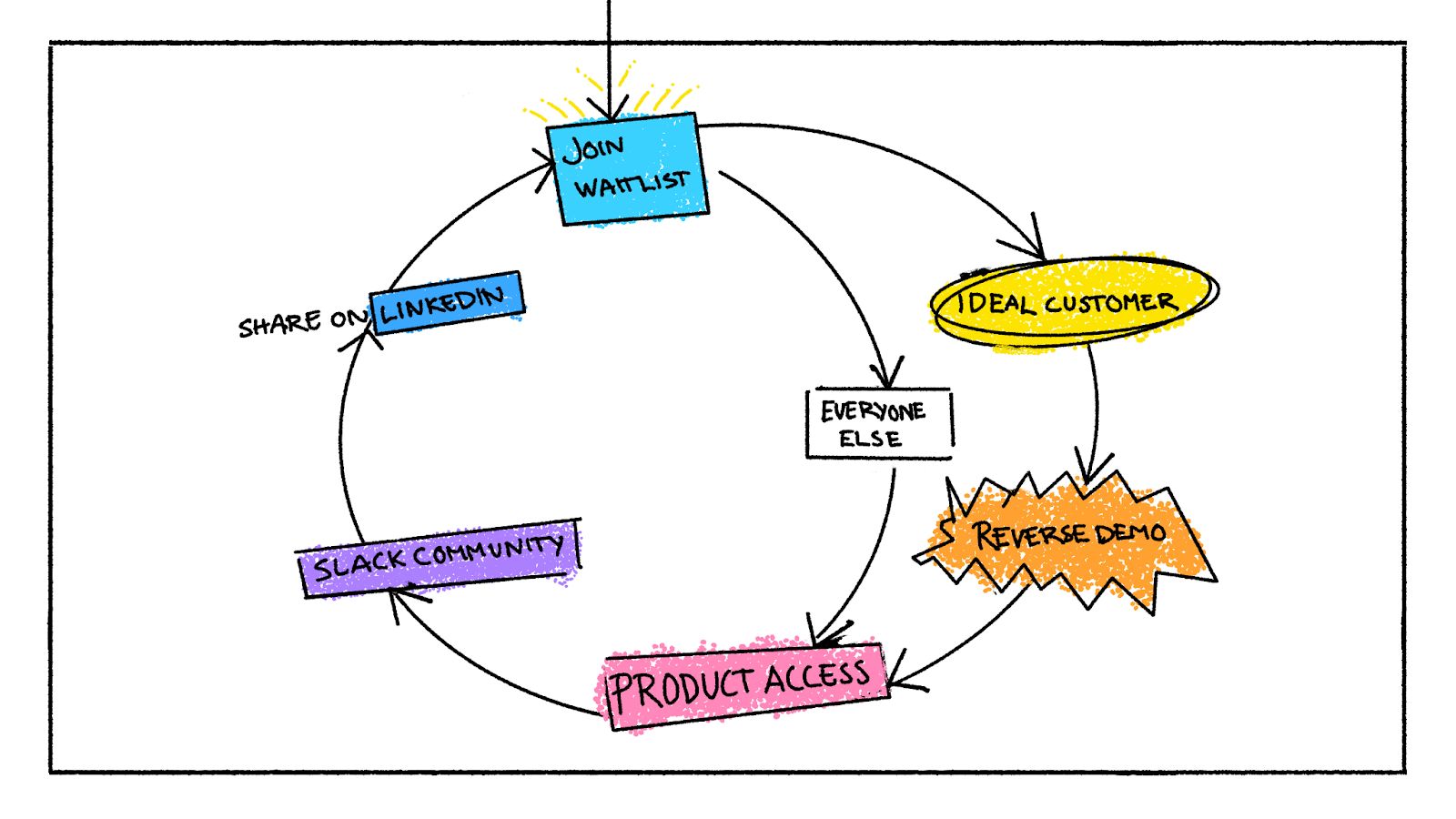- High Output Work
- Posts
- ☄️ Clay’s $30M ARR in 2 years (with a twist)
☄️ Clay’s $30M ARR in 2 years (with a twist)
How Clay became a $1.25B powerhouse
Clay started in 2017.
And in 2022, the startup still had close to no revenue.
Then something happened.
24 months later, Clay reached $30M ARR and raised $62M at $500M valuation.
Everyone wants that type of success, but staying alive for 5 years with almost no revenue shows it wasn’t an “overnight success.”
You can build something technically impressive. Everyone can think it's "cool." But if your revenue stays at zero, your team’s motivation can do down even faster than your runway.
Clay escaped this by discovering counterintuitive growth tactics.
This week I’m breaking them down for you.
The Reverse Demo
Instead of telling users to book a demo of their software, Clay would send an email saying to come to the call with a specific dataset they wanted help enriching and that, by the end of the call, their problem with the data would be solved.
Prospects would show up, open up Clay, share their screen, and Clay’s team would walk them through how to solve the problem they had step-by-step.
This wasn’t selling. This was showing.
Users instantly saw that Clay’s product was valuable for them specifically. It could do the job it was meant to do.

Self-Sustaining Community
Clay has one of the most active user communities on Slack.
And, early on, even if a prospect didn’t sign up for Clay, the “reverse demo” caused many of them to join Clay’s user community afterwards anyway.
This meant they stayed warm without Clay’s team needing to do extensive follow ups — they just kept Clay top of mind by being in the community.
Over time, experts in the community starting answering questions from newer users, which reduced the amount of time Clay’s team needed to spend on customer support.
And this all came about because the founders acquired early customers manually by participating in similar communities. Here’s Anand again:
“The very first thing I did was join a group called Modern Sales Pros. I looked through the archive for words like ‘enrichment,’ ‘data,’ and ‘outbound.’ And I whittled it down to 30 people who had said something interesting about the topic in the last few years. I joined all of these WhatsApp groups and at least a dozen sales and marketing Slack communities and basically just waited for people to talk about problems related to data enrichment.”

Saying “No” to users
Clay’s waitlist was gigantic. They believed the most important thing was building the right product for their users and focused on that maniacally before opening the floodgates.
And they used their own product to score and prioritize signups based on:
Company size and industry fit
Likelihood to convert
Potential for community contribution
And even for the people they allowed through to become customers, they created “strategic friction” to ensure only people who truly needed their solution became early users, including a high price point with manual invoicing.
Here’s how Clay’s CEO, Varun Anand, puts it:
“As recently as January 2023, we didn’t have billing in the product. I was just sending Stripe invoices to people, which is crazy for a self-serve product for $200/month. If you can get to $1M ARR with so much billing friction in a self-serve motion, you likely have something you can scale.”
Deliberate Focus
Clay started out trying to do everything for everyone. As you might expect, that didn’t lead to much traction.
They tried to serve marketers, engineers, and recruiters but delighted none. But one group who kept proactively finding them was agency owners. Specifically, cold email agency owners.
Seeing that one customer profile consistently push through the friction caused the team to double down on them and make cold email agencies the product’s target ICP.
They were at the point where they didn’t have the luxury to care how big the market was. They just narrowed their focus and made the best data enrichment software for them that they could.
Bottom Line
Clay’s early approach to growth wasn’t about maxing out vanity metrics or even their user numbers — it was that by building the right systems and product, they’d get and be able to focus on the right users.
Many of the winning moves they made were the opposite of traditional best practices.
Sometimes the problem isn’t that you aren’t growing fast enough, it’s that you're trying to grow the wrong way.
Clay’s success, despite the long incubation period, proves that sustainable growth comes from focus.
A question to ask yourself: What "growth best practice" is actually limiting your growth?
Until next week,
David Lobo
Head of Growth, Workmate
P.S. Which part of Clay's playbook could you implement this week? Reply and let me know — I respond to every message.
P.P.S. Want to experience the power of doing less administrative work? Workmate handles your entire scheduling workflow end-to-end. [Join the waitlist today.]